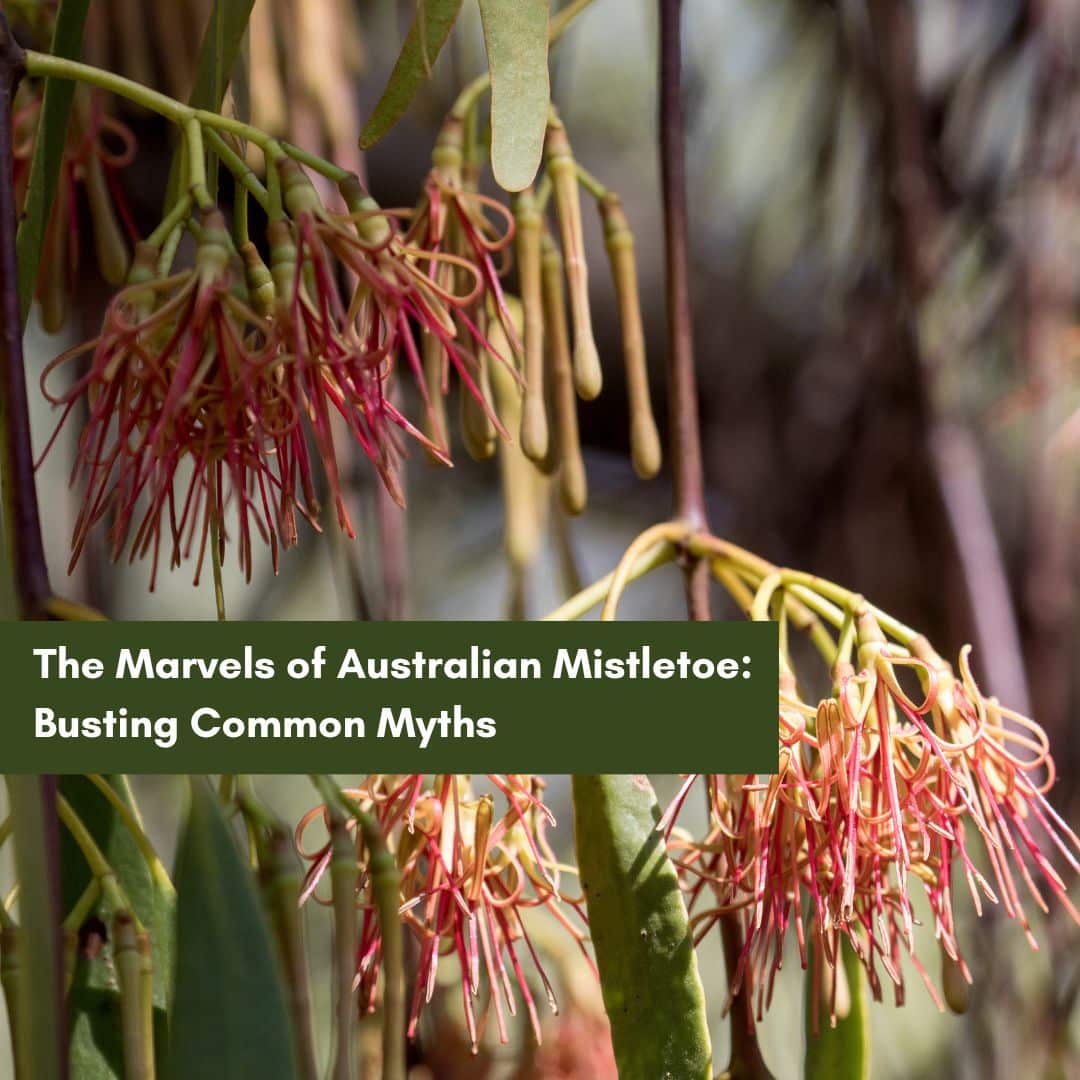Mistletoe Trivia
Test your knowledge with our quiz below. Hover or click / tap on the question to reveal the answer.
Question 1
Which Australian State or Territory has no native Mistletoe species?
Which Australian State or Territory has no native Mistletoe species?
Tasmania
Question 2
How many Mistletoe species are found in Australia?
How many Mistletoe species are found in Australia?
97
Question 3
Which Australian Mistletoe species is the largest in the world?
Which Australian Mistletoe species is the largest in the world?
Western Australian Christmas Tree (Nuytsia floribunda). Grows up to 10 m in height.
Question 4
Are all the Mistletoe species occurring in Australia native or introduced?
Are all the Mistletoe species occurring in Australia native or introduced?
NATIVE!
In the Australian landscape, mistletoe often carries an undeserved reputation as a parasitic menace, believed to spell doom for its host trees. However, let’s set the record straight—this remarkable little plant is far from being a destructive force. In fact, Australian mistletoe plays a crucial role in supporting biodiversity, punching above its weight in ecological significance.
- Symbiotic Dance: Contrary to popular belief, mistletoe doesn’t aim to harm its host. Instead, it engages in a fascinating symbiotic relationship. The plant establishes a complex connection with its host tree, benefiting both parties. Far from being a parasitic pest, mistletoe provides essential resources for various wildlife species.
- Wildlife Haven: Australian mistletoe acts as a haven for biodiversity. Its branches and foliage become shelter and nesting sites for birds and small mammals. In turn, these creatures contribute to the plant’s reproductive cycle by dispersing its seeds, creating a harmonious ecosystem.
- Berry Buffet for Birds: Mistletoe’s berries are a sought-after delicacy for many Australian bird species. By feasting on these berries, birds play a crucial role in seed dispersal. As they move from tree to tree, the mistletoe seeds are transported, helping to diversify the plant life in the surrounding areas.
- Ecosystem Enrichment: Beyond its immediate host, mistletoe contributes to the overall enrichment of ecosystems. The biodiversity it supports extends to insects, fungi, and other flora, creating a web of life that enhances the health and resilience of the environment.
Australian mistletoe is an unsung hero in the tapestry of our natural landscapes. Far from being a destructive force, it serves as a vital player in supporting biodiversity and fostering intricate ecological relationships. The next time you encounter mistletoe in the Australian bush, appreciate its role in the intricate dance of nature, where every plant, no matter how small, plays a crucial part in the grand symphony of life.
Want to learn more?
Attend a hands on mistletoe discovery workshop in Congewai on the 10th Feb 2024

